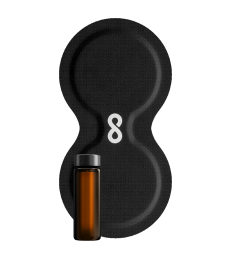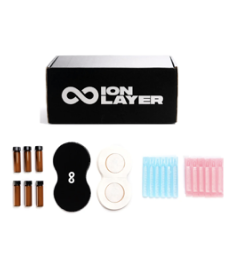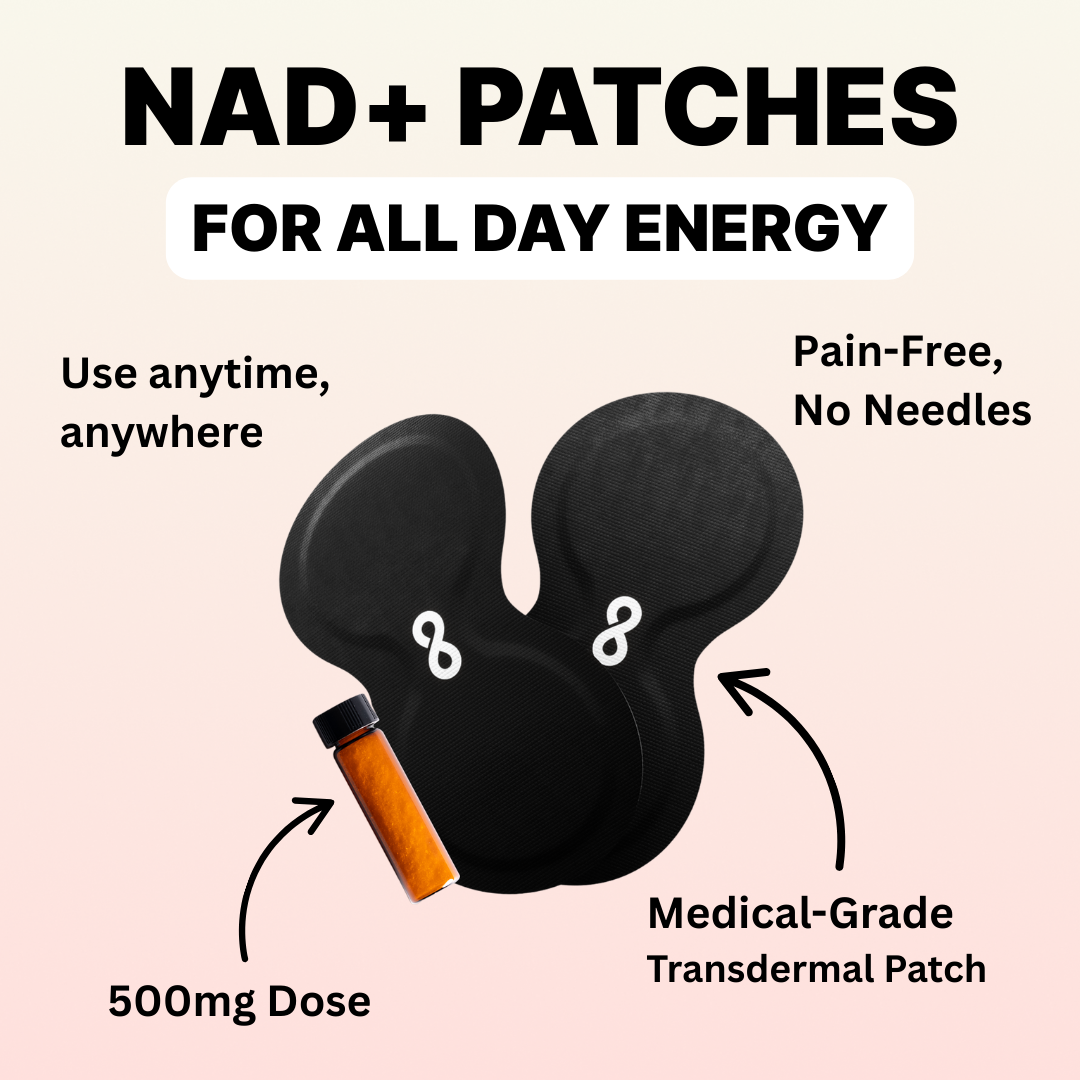
We are living in a time of human history when the majority of the population is living longer than ever. That’s great, but it’s not all sunshine and rainbows. Unfortunately, for millions, this means, while they’re alive longer, they are also dying longer with the burden of prolonged illness and chronic conditions. As aging progresses, nearly everyone 65 and older is expected to face one or two chronic conditions. According to the National Council on Aging, close to 95% have at least one chronic condition, and almost 80% have two or more.
Whether you are in your twenties, thirties, forties, or beyond, it’s worth noting that while genetics matter, you have a lot to say about whether you’ll become one of those statistics. And, you don’t have to!
A mounting number of studies have been shedding new light on the aging process and offer the tantalizing possibility of extending our healthspan and lifespan. This discovery centers around a molecule called Nicotinamide Adenine Dinucleotide, or NAD for short. NAD is a coenzyme that plays a critical role in various cellular processes, including energy production, DNA repair, and gene expression.
Let’s explore the fascinating connection between NAD and aging, and how harnessing the power of this molecule could potentially revolutionize our approach to health optimization and anti-aging strategies.
What is aging?
Aging is a universal phenomenon that has fascinated scientists and researchers for centuries. And if you’re reading this blog, you’ve imagined the idea of how long you’d want to live, and how to make it there as healthy as possible.
As we age, our bodies undergo a series of complex changes that can impact our overall health and well-being. From wrinkles and gray hair to declining cognitive function and increased susceptibility to diseases, the aging process is a multifaceted journey that has long been the subject of scientific investigation.
As of today, scientists have agreed to name 12 hallmarks of aging, many of which interlink with NAD levels. If you’re wondering what happened to the notion that there were 9 hallmarks for as long as you could remember, let us catch you up. Just this year, in January 2023, scientists recognized there were three additional pieces to that aging puzzle that’s worth mentioning.
These original hallmarks are genomic instability, telomere attrition, epigenetic alterations, loss of proteostasis, disabled macroautophagy, deregulated nutrient-sensing, mitochondrial dysfunction, cellular senescence, stem cell exhaustion. And the recently added three include altered intercellular communication, chronic inflammation, and dysbiosis.
What is NAD?
At the heart of NAD's role in aging lies its ability to regulate cellular energy metabolism. NAD serves as a crucial coenzyme in the process of cellular respiration, where it participates in the conversion of nutrients into usable energy in the form of adenosine triphosphate (ATP). This process occurs within the mitochondria, the cellular powerhouses responsible for generating energy.
As we age, the levels of NAD in our cells naturally decline, leading to a reduction in mitochondrial function and energy production. This decline in NAD levels can have profound consequences for overall health and vitality. We will show signs of aging faster, have lower energy, and our body will be less efficient in repairing any DNA damage that might occur, for example, due to environmental factors — whether it’s mold exposure, chronic stress or inflammation. Additionally, studies have shown a correlation between NAD decline and increased risk of obesity, neurodegenerative diseases, hearing loss as well as cancer.
However, recent studies both in animal models and humans have shown that boosting NAD levels through supplementation or activation of NAD synthesis pathways can have significant anti-aging effects.
NAD and DNA Repair: Preserving Youthful Integrity
Let’s put our science hat on for a second. As mentioned above, one of the crucial aspects of NAD's role in aging is its involvement in DNA repair mechanisms. Our DNA is constantly subjected to damage from various sources, including environmental factors and internal cellular processes. Efficient DNA repair is essential for maintaining the integrity of our genetic material and preventing the accumulation of mutations that can lead to age-related diseases.
NAD plays a vital role in DNA repair through its interaction with an enzyme called poly(ADP-ribose) polymerase-1 (PARP-1). Bear with us, it’ll make sense, promise.
A study published in Molecular Biology of the Cell discussed how PARP-1 is responsible for detecting DNA damage and initiating the repair process. However, PARP-1 requires NAD as a substrate to carry out its repair functions effectively.
In other words, as NAD levels decline with age, so does the efficiency of DNA repair. This decline can result in the accumulation of DNA damage and an increased risk of age-related diseases. By replenishing NAD levels, we may be able to enhance DNA repair capacity and potentially slow down the aging process.
NAD and Sirtuins: The Guardians of Longevity
Sirtuins are a family of proteins that have gained significant attention in the field of aging research. These proteins play a role in regulating various cellular processes, including DNA repair, gene expression, and metabolism. NAD is an essential cofactor for sirtuins, and its availability directly influences their activity.
One of the most well-known sirtuins is SIRT1, which has been extensively studied for its potential role in extending lifespan and promoting healthspan. SIRT1 has been shown to regulate gene expression patterns associated with longevity, stress resistance, and improved metabolic health.
By activating SIRT1 and other sirtuins through the availability of NAD, it may be possible to enhance cellular repair mechanisms, boost metabolic efficiency, and promote overall health and longevity.
A study published in Cell concluded what was music to our ears: “Restoring NAD+ by supplementing NAD+ intermediates can dramatically ameliorate these age-associated functional defects, counteracting many diseases of aging, including neurodegenerative diseases. Thus, the combination of sirtuin activation and NAD+ intermediate supplementation may be an effective anti-aging intervention, providing hope to aging societies worldwide.”
Boosting NAD Levels
Ok, it’s clear that one would want high NAD levels even on their 50th birthday. But how do you get there? Hint: Ion Layer patches are such a thoughtful birthday gift – Just saying, and also, read on to see why.
Getting the right amount of NAD precursors from food on a consistent basis and to mitigate the negative impact of aging can be a bit of a headache. Precursors, that the body uses to convert to NAD+, are micronutrients naturally found in both vegetarian and animal food sources. There are high levels in, for example, broccoli, cucumber, cabbage, avocado, whole wheat, yeast, eggs, tomato milk, meat, and liver.
Thankfully, as our understanding of the relationship between NAD and aging grows, innovative solutions like NAD patches have emerged.
NAD patches are a convenient and efficient modality for increasing NAD levels in the body. By delivering NAD directly through the skin, these patches bypass the digestive system, allowing for more effective absorption. Regular use of NAD patches can potentially enhance cellular energy production, support DNA repair mechanisms, and activate sirtuins, ultimately promoting healthy aging.
At Ion Layer, we utilize a medical-grade patch that delivers raw NAD+ via a process called iontophoresis. It’s a proven technology that's been used in the medical space for decades, so it was an obvious choice for us to provide an effective, cost-efficient and convenient way for helping you boost NAD levels. No need for sitting around for hours with a needle in your arm, often dealing with discomfort. Just stick on the Ion Layer patch, leave it on for 14 hours, and go about your day as usual but with a lot more energy and heightened sense of health.
Does it work? Yes, indeed. Take a look at one of our co-founders before and after test results here. In just seven days of using the NAD patches, his intracellular NAD+ levels increased by 48%.







